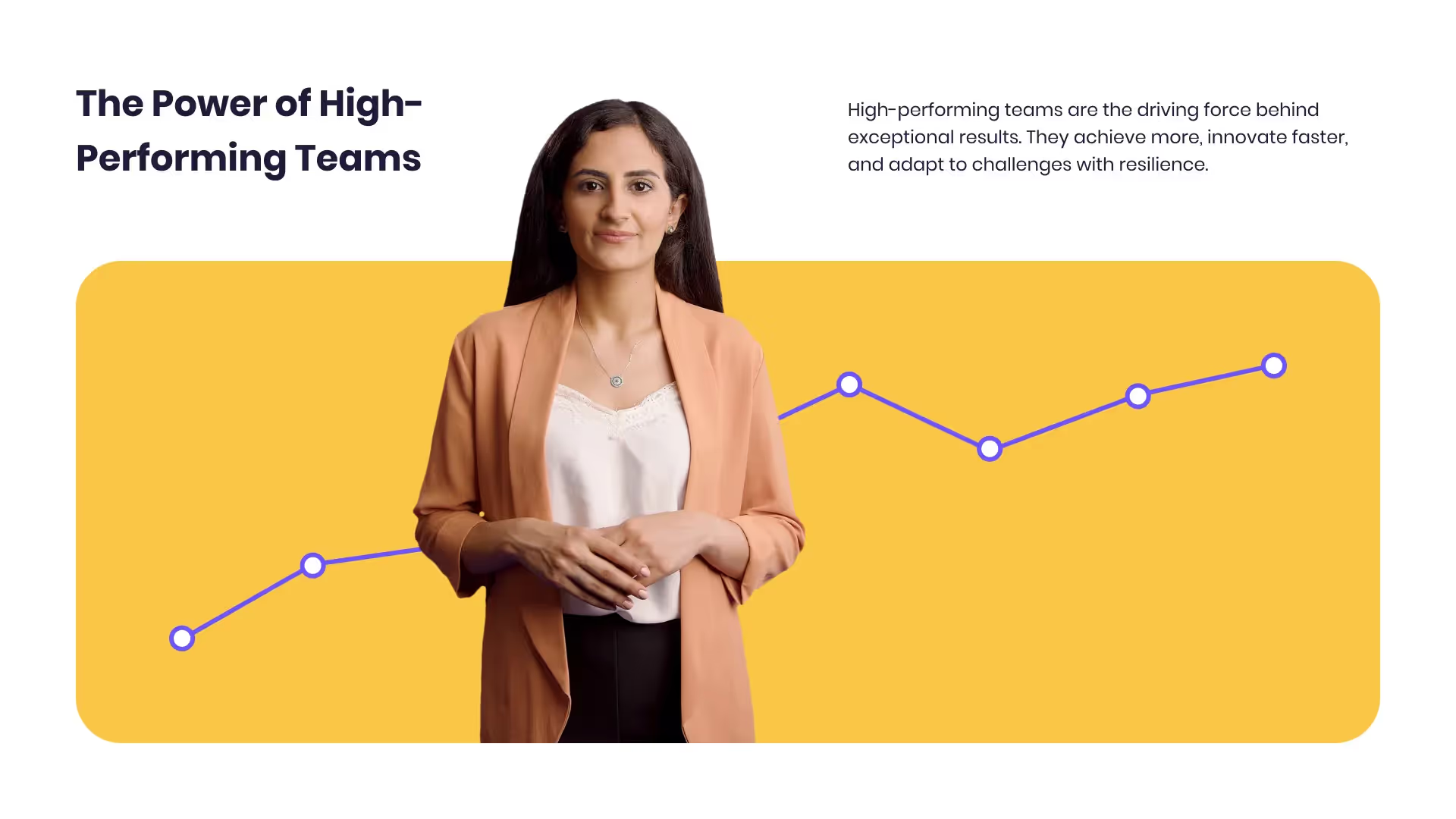.avif)
Want a personalised avatar?
Instant Avatars can be recorded using your phone or camera, and created in under a minute. These avatars are quick and easy to create, and they keep your original background and movements.

Video Analyzer AI: Revolutionizing Business Video Intelligence


Understanding Video Analyzer AI: A New Era in Business Productivity
In today's fast-paced digital world, businesses are constantly seeking innovative solutions to streamline processes and enhance productivity. One such revolutionary tool that has emerged is the Video Analyzer AI. This technology has the potential to transform how businesses interpret and utilize video content, leading to more informed decision-making and strategic planning. Video Analyzer AI enables organizations to extract meaningful insights from video data by automatically analyzing its content. For corporate learning and development teams, HR, compliance, and marketing departments, this means unlocking new avenues for training, monitoring, and customer engagement without the traditional time-consuming methods.
Video content is rich with data, but historically, tapping into this data required manual effort and significant resources. Video Analyzer AI changes this by offering automated solutions that can detect patterns, recognize speech, and generate summaries, thereby saving time and reducing costs. With machine learning algorithms, these tools can understand and categorize video content rapidly, providing businesses with actionable insights.
For industries like tech, healthcare, logistics, finance, and education, the implications of adopting video analysis technology are profound. It not only enhances the way content is delivered but also improves compliance and training efficiency. In this blog post, we'll explore the practical applications, benefits, and strategies for implementing Video Analyzer AI in business settings, guiding you through the steps to harness its full potential.
Key Benefits of Video Analyzer AI
Embracing Video Analyzer AI can offer several benefits that align with business goals, particularly in efficiency, accuracy, and scalability. Here's how:
- Efficiency: Automation of video analysis reduces the time spent on manual review, allowing teams to focus on strategic tasks.
- Accuracy: AI-driven tools minimize human error and provide consistent results.
- Scalability: As your video content library grows, AI ensures analysis can scale without additional resource strain.
For example, HR teams can quickly assess training session effectiveness or compliance with company policies by analyzing recorded sessions. Marketing teams can evaluate customer engagement through detailed video content analysis, which helps in tailoring future campaigns.
Real-World Applications and Case Studies
To illustrate how Video Analyzer AI can be integrated into business operations, consider the following case studies:
Case Study: Enhancing Employee Training in Technology Firms
A leading tech company implemented Video Analyzer AI to analyze employee training videos. By doing so, they were able to quickly identify which training modules were most effective, allowing them to refine content for better engagement and learning outcomes.
Case Study: Improving Compliance in Healthcare
In the healthcare sector, compliance is crucial. A hospital used Video Analyzer AI to ensure staff training videos met regulatory standards. This not only streamlined their compliance checks but also reduced the risk of regulatory penalties.
Step-by-Step Guide to Implementing Video Analyzer AI
Implementing Video Analyzer AI might seem daunting, but with a structured approach, it becomes manageable:
- Identify Needs: Determine which areas of your business could benefit most from video analysis.
- Select a Tool: Choose a Video Analyzer AI platform that fits your business requirements.
- Integration: Integrate the tool with your current systems, ensuring compatibility and ease of use.
- Test and Refine: Conduct initial tests to gauge effectiveness, and refine processes based on feedback.
- Train Staff: Ensure your team is well-versed in using the new tools effectively.
Best Practices for Using Video Analyzer AI
To maximize the potential of Video Analyzer AI, consider these best practices:
- Regular Updates: Keep your AI tools updated to leverage new features and improvements.
- Data Privacy: Ensure compliance with data privacy regulations when handling video data.
- Continuous Learning: Encourage a culture of learning to adapt to AI-driven changes.
By adhering to these practices, businesses can ensure smooth integration and operation of AI tools.
Challenges and Solutions in Adopting Video Analyzer AI
While the benefits are clear, adopting Video Analyzer AI does come with challenges:
- Data Quality: Low-quality videos can hamper analysis. Solution: Invest in quality recording equipment.
- Technical Expertise: A lack of expertise can slow implementation. Solution: Provide training and support for your team.
- Resistance to Change: Employees may resist new technologies. Solution: Communicate benefits and involve them in the process.
Recognizing these challenges and addressing them proactively will smooth the transition to AI-driven video analysis.
Industry Insights and Current Trends
The landscape of Video Analyzer AI is rapidly evolving, with trends pointing towards greater integration and functionality. As AI tools become more sophisticated, we can expect:
- Increased Accuracy: AI models will continue to improve, offering even more precise analysis.
- Broader Applications: From security to education, AI will find new use cases.
- Enhanced User Interfaces: Tools will become more user-friendly, reducing the learning curve.
Staying informed on these trends will help businesses remain competitive and innovative in their use of technology.
Conclusion
Video Analyzer AI represents a significant leap forward in how businesses can harness the power of video content. By automating the analysis process, companies can save time, reduce costs, and make more informed decisions. As we've explored, the applications are vast and varied, offering benefits across multiple industries and functions.
By following best practices and preparing for challenges, businesses can seamlessly integrate this technology into their operations. As the field continues to evolve, staying updated on trends will ensure that your organization remains at the forefront of innovation.
Ultimately, Video Analyzer AI empowers businesses to unlock the full potential of their video assets, transforming raw footage into actionable insights. As more organizations adopt this technology, the possibilities for enhanced productivity and efficiency are limitless.

Networking and Relationship Building
Use this template to produce videos on best practices for relationship building at work.

Developing high-performing teams
Customize this template with your leadership development training content.

Course Overview template
Create clear and engaging course introductions that help learners understand the purpose, structure, and expected outcomes of your training.
Frequently asked questions
What is Video Analyzer AI?

Video Analyzer AI is a technology that uses artificial intelligence to analyze video content, extracting insights and patterns automatically, thus enhancing decision-making and strategy formulation.
How can Video Analyzer AI benefit corporate training?

It can quickly assess the effectiveness of training modules, identify areas for improvement, and ensure compliance with company policies, making training more efficient and impactful.
What industries can benefit most from Video Analyzer AI?

Industries like technology, healthcare, logistics, finance, and education can greatly benefit from the insights provided by Video Analyzer AI, enhancing training, compliance, and customer engagement.
What are the common challenges in implementing Video Analyzer AI?

Challenges include data quality, technical expertise, and resistance to change. Solutions involve investing in quality equipment, providing staff training, and communicating the benefits effectively.
Are there any privacy concerns with Video Analyzer AI?

Yes, handling video data requires compliance with data privacy regulations to protect sensitive information and ensure user trust.
Didn’t find the answer you were looking for?
















%20(1).avif)
.webp)


